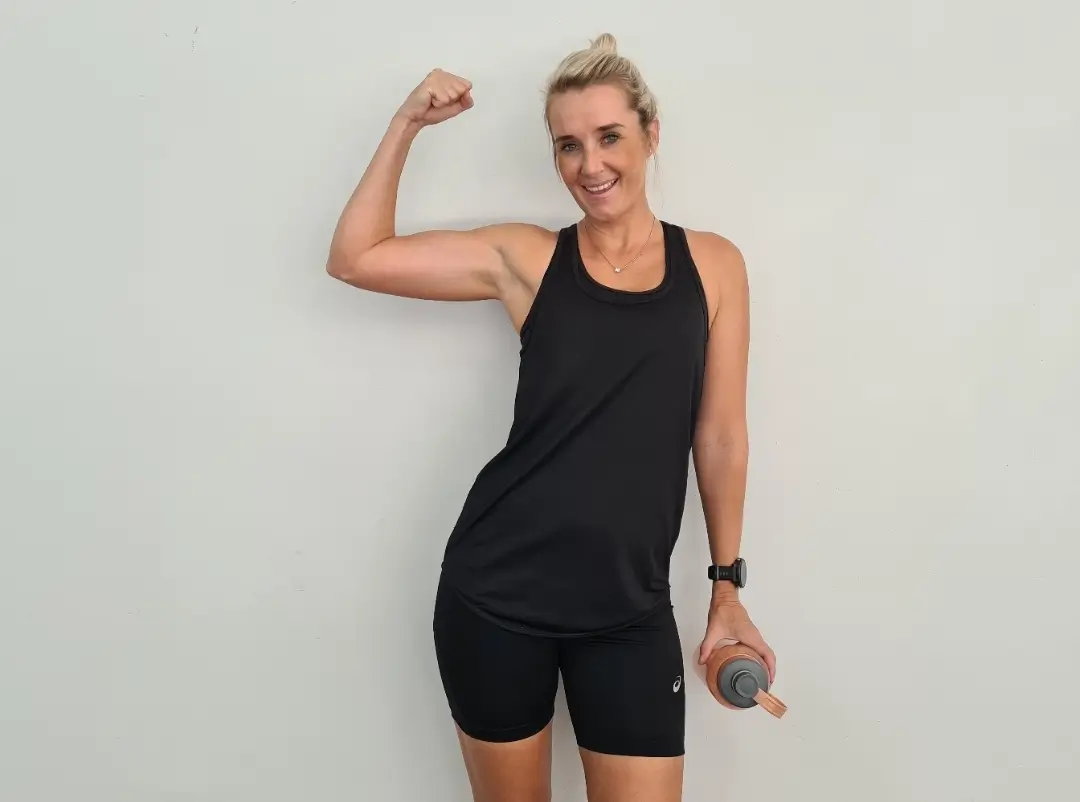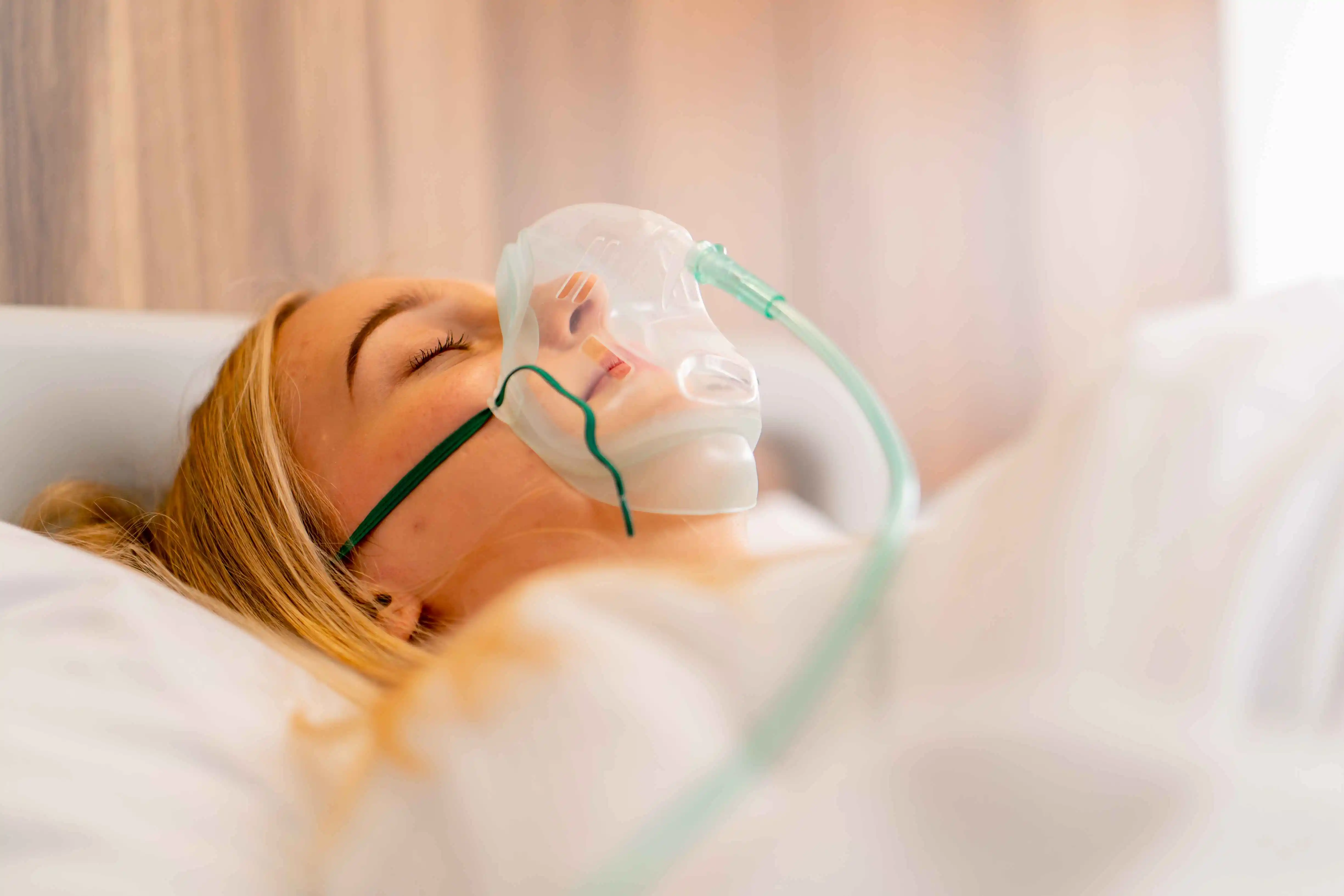Continuous Positive Airway Pressure (CPAP) therapy has emerged as a cornerstone treatment for obstructive sleep apnea (OSA), a condition affecting millions worldwide.
This article delves into the mechanics of CPAP, its benefits, potential challenges, and how it works, providing a comprehensive overview for patients and healthcare professionals alike. Whether you’re newly diagnosed or seeking to optimize your therapy, understanding CPAP is essential for achieving restful, restorative sleep.
What is CPAP?
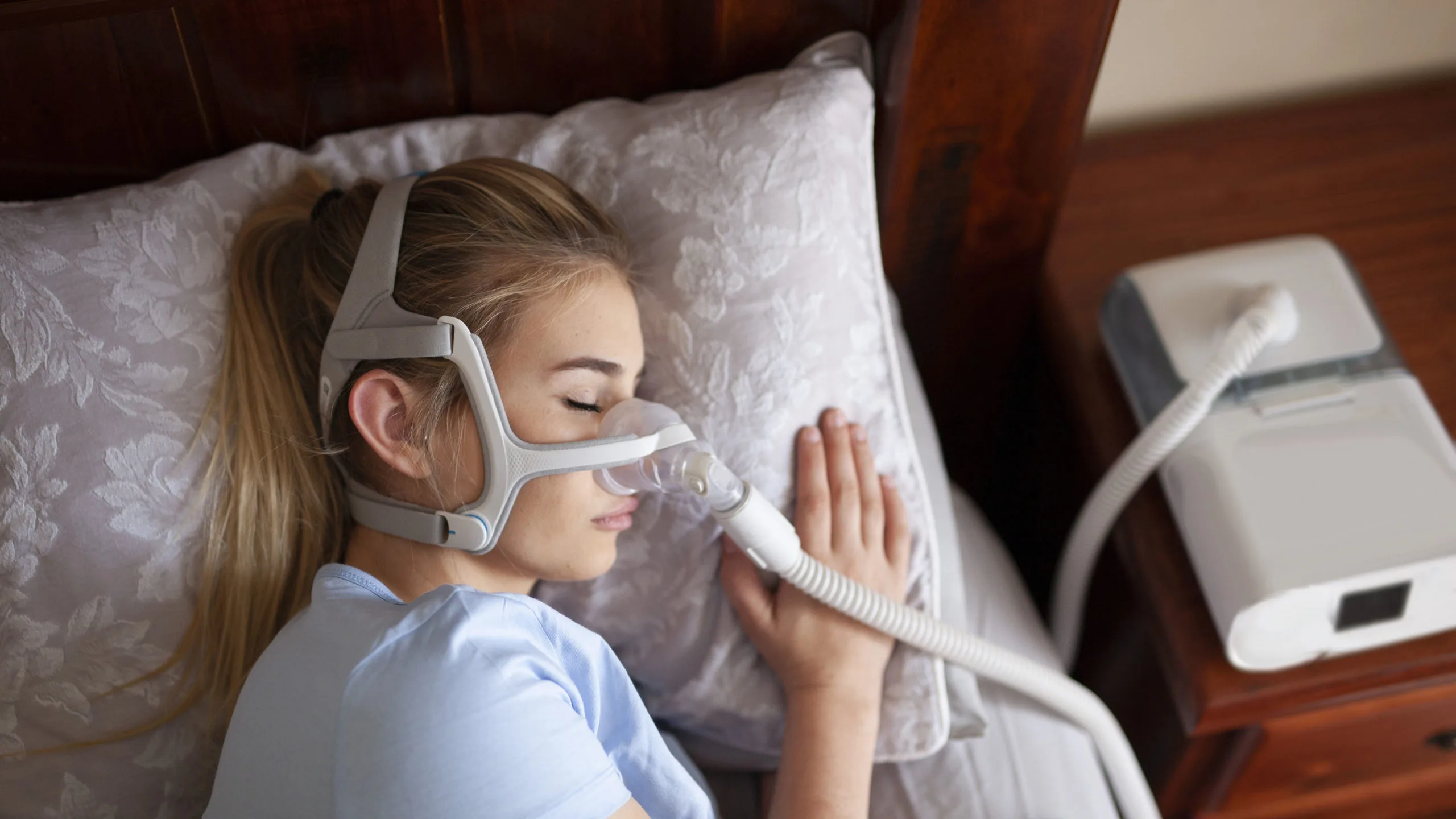
The non-invasive treatment for sleep apnea, including obstructive and central sleep apnea, is continuous positive airway pressure (CPAP). To keep the airways open during sleep, a CPAP machine is used to deliver pressurized air through a mask.
CPAP primarily alleviates breathing interruptions during the sleep cycle, ensuring a continuous flow of oxygen to the body.
The Science Behind CPAP Technology
CPAP works by sending a steady stream of pressurized air through a tube into a mask that the user wears while they sleep. This constant pressure helps to stent the airways open, preventing collapse and interruptions in breathing.
The key components of a CPAP system include the mask, mask straps, tubing, motor, and air filter. The motor blows air into the connected tube, which then delivers the air into the mask and the user's airway.
The Importance of Treating Sleep Apnea for Overall Health and Well-Being
- Health Benefits: Effectively treating sleep apnea with CPAP can significantly improve sleep quality, reduce the risk of heart disease, stroke, diabetes, and high blood pressure, and lower the likelihood of daytime sleepiness.
- Consequences of Untreated Sleep Apnea: Untreated sleep apnea can lead to serious health concerns such as heart disease, stroke, and diabetes, and can impact overall quality of life.
How CPAP Works
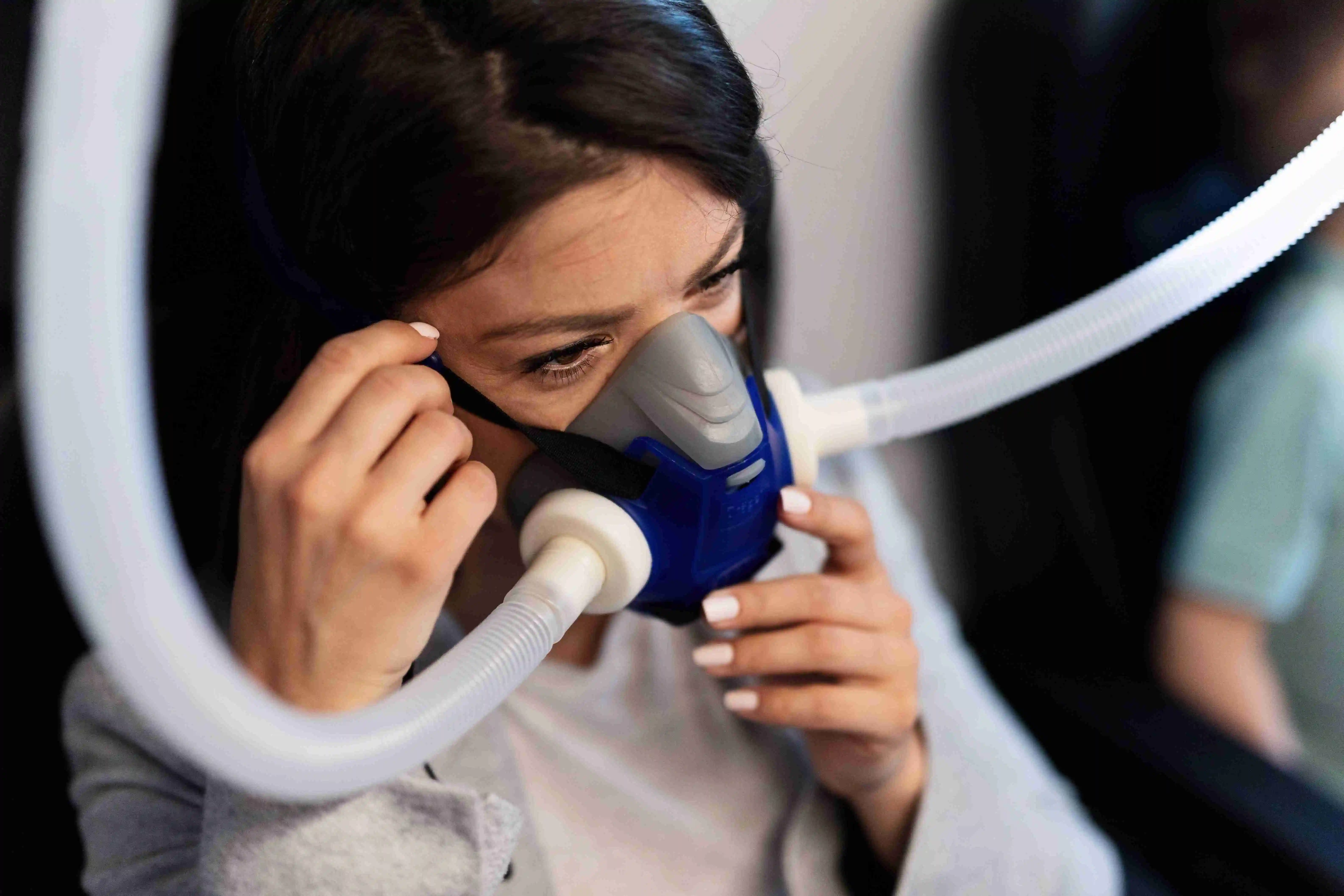
The CPAP Machine
The CPAP machine takes in room air, filters, and pressurizes it before delivering it through a tube and into the mask. Newer CPAP models are quiet, with an average noise output of about 30 dB.
The Delivery System
The hose and mask play a crucial role in delivering the pressurized air to the user's airway, maintaining a continuous flow of oxygen.
Airway Splinting
The pressurized air gently keeps the tongue, uvula, and soft palate from shifting too far into the airway, stabilizing breathing and improving overall sleep quality.
By adhering to CPAP therapy, individuals can effectively manage sleep apnea and experience improved health and well-being.
Who needs CPAP?
For OSA, doctors primarily prescribe CPAP therapy to reduce symptoms and enhance sleep quality by maintaining an open airway during sleep.
Obstructive sleep apnea (OSA) is a sleep disorder characterized by the repeated cessation of breathing during sleep. This condition occurs when the throat muscles relax, obstructing the airway and leading to disrupted breathing patterns. OSA not only affects sleep quality but also poses significant risks to overall health, including an increased likelihood of cardiovascular problems and daytime fatigue.
Sleep Apnea Types That are Treated with CPAP
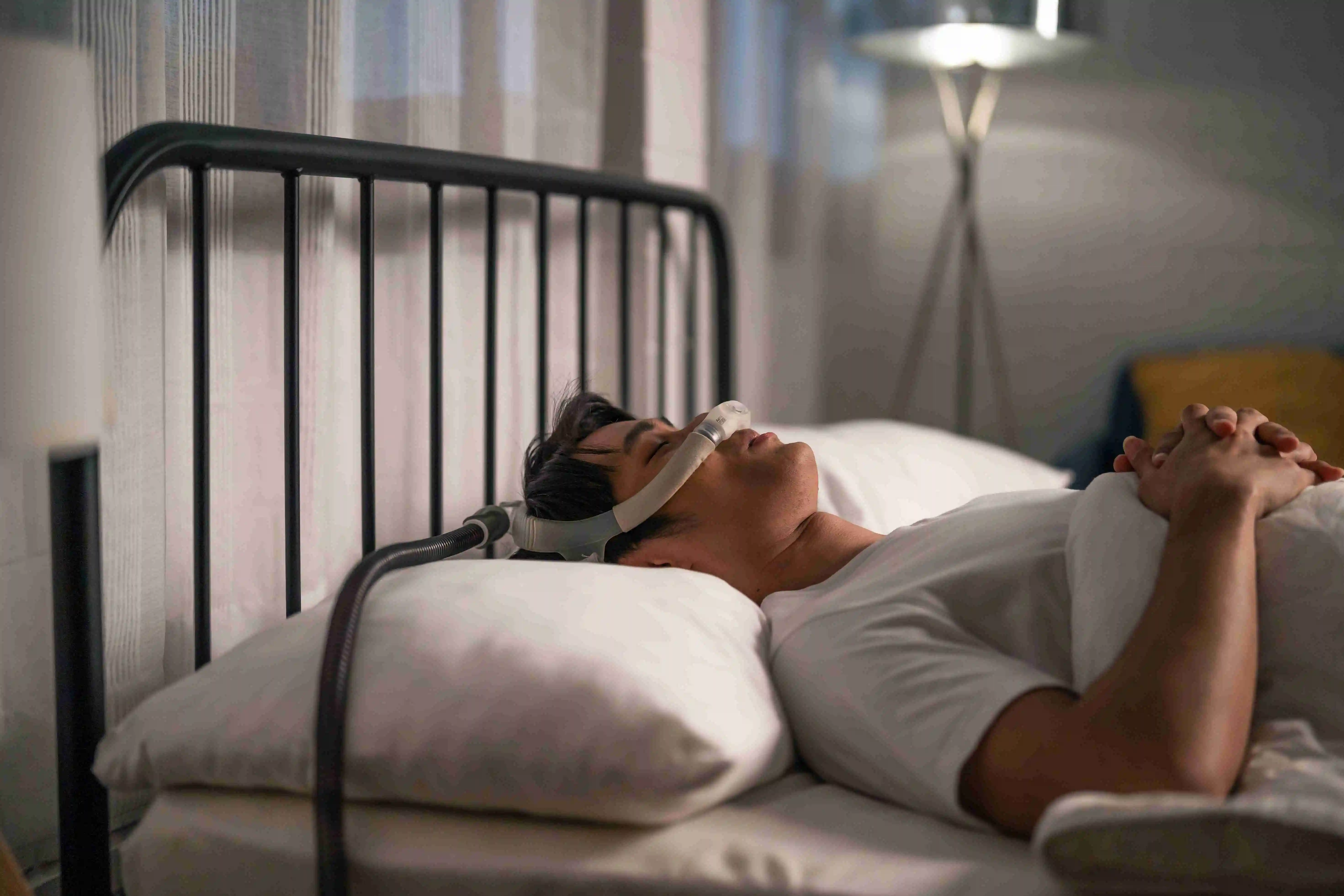
- Central Sleep Apnea: Central sleep apnea (CSA) is a condition where breathing stops and starts during sleep due to the brain's inability to send proper signals to the muscles that control breathing. This type of sleep apnea is less common than OSA and is often associated with heart failure, stroke, or sleeping at high altitudes. By assisting in maintaining a consistent airflow, CPAP therapy can manage CSA and address breathing irregularities.
- Complex Sleep Apnea: This condition is a combination of obstructive and central sleep apnea. It can occur in some individuals with a history of obstructive sleep apnea who develop central sleep apnea while using continuous positive airway pressure (CPAP) for treatment. Continued use of CPAP may help resolve complex sleep apnea in some cases.
- Alveolar Hypoventilation Syndrome: The alveolar hypoventilation syndrome is characterized by a decrease in the exchange of oxygen and carbon dioxide in the lungs, resulting in abnormally high levels of carbon dioxide in the blood. CPAP therapy can help manage this condition by improving ventilation and gas exchange during sleep.
Symptoms That Might Point to Needing CPAP
- Loud Snoring: OSA may be present if there is persistently loud snoring, especially when there are breathing pauses.
- Witnessed Breathing Pauses During Sleep: If someone observes episodes of paused breathing during your sleep, it could be a sign of a sleep disorder.
- Morning Headaches: Waking up with frequent headaches, especially in conjunction with other symptoms, might point to the need for evaluation.
- Excessive Daytime Sleepiness: Persistent fatigue and daytime drowsiness despite adequate sleep may signal the presence of a sleep disorder.
- Difficulty Concentrating: Impaired focus and concentration during daytime activities can be linked to poor sleep quality.
- Irritability and Mood Swings: Sleep disturbances can impact mood and emotional well-being, leading to irritability and mood swings.
Benefits of CPAP Therapy
- Improved Sleep Quality: Continuous Positive Airway Pressure (CPAP) therapy significantly enhances sleep quality, ensuring individuals experience restful and uninterrupted sleep cycles. By preventing the breathing interruptions commonly associated with sleep apnea, CPAP therapy promotes a deeper and more rejuvenating sleep experience, allowing individuals to wake up feeling refreshed.
- Increased Daytime Alertness: Another important benefit of CPAP therapy is an increase in daytime alertness. Many patients report a reduction in daytime sleepiness, which enhances their alertness and cognitive function during waking hours. As a result, individuals often feel more energized and productive throughout the day, leading to improved overall functionality in both personal and professional settings.
- Reduced Risk of Health Issues: CPAP therapy is associated with a reduced risk of serious health issues. It can decrease the likelihood of developing cardiovascular diseases, strokes, and diabetes. By maintaining continuous positive airway pressure, CPAP therapy effectively mitigates the potential adverse health impacts of sleep-disordered breathing, contributing to a healthier life.
- Enhanced Quality of Life: The enhancement of quality of life is another significant benefit of CPAP therapy. Patients often experience an overall improvement in their well-being due to better sleep and reduced health risks. This therapy fosters a sense of vitality, enabling individuals to engage more fully in their daily activities and enjoy life to the fullest.
- Improved Cognitive Function: CPAP therapy has been shown to improve cognitive function. Patients often experience enhanced memory and cognitive abilities, contributing to sharper mental acuity. The restoration of restorative sleep patterns has a positive impact on cognitive performance and memory retention, which can be particularly beneficial in both academic and professional settings.
- Improved Mood and Reduced Irritability: CPAP is linked to improved mood and reduced irritability. By addressing sleep-related issues, it fosters emotional balance and well-being. Patients often report feeling more emotionally resilient and maintaining a positive outlook on life, which can enhance their interactions with others and overall life satisfaction.
- Reduced Snoring: One of the more immediate benefits of CPAP therapy is the reduction of snoring. This therapy effectively reduces or eliminates snoring, creating a quieter and more restful sleep environment. This not only improves the sleep quality of the individual undergoing therapy but also benefits their sleeping partner or household members, leading to a more harmonious living situation.
Types of CPAP Machines
CPAP therapy encompasses various types of machines, each designed to address specific needs and preferences. Understanding the key features and applications of different CPAP machines is crucial for selecting the most suitable option. The main types of CPAP machines include:
- Standard CPAP: It delivers continuous positive airway pressure at a fixed rate, effectively maintaining open airways during sleep. This type of CPAP is ideal for individuals who require consistent pressure support throughout the night, ensuring they can breathe easily and comfortably while resting.
- Auto-CPAP or Automatic CPAP: This is an innovative machine that self-regulates and adjusts pressure levels based on individual breathing patterns and needs. This advanced technology offers personalized pressure adjustments, optimizing therapy effectiveness for each user. By responding to changes in breathing, Auto-CPAP ensures that patients receive the most appropriate level of support throughout the night.
- Bi-Level Positive Airway Pressure (BiPAP): This machine provides two different pressure levels for inhalation and exhalation, catering specifically to individuals with unique breathing requirements. This system is particularly beneficial for those who may need higher pressure during inhalation, allowing for a more comfortable and effective breathing experience.
- Travel CPAP: Designed with portability and convenience in mind, enabling individuals to maintain their CPAP therapy while traveling or on the go. These devices are compact and lightweight, ensuring seamless integration into diverse lifestyles without compromising on the quality of care.
Choosing the Right CPAP Machine
When selecting a CPAP machine, several crucial factors should be considered to ensure optimal therapy outcomes and user satisfaction. These factors include:
- Sleep Apnea Severity: When selecting a CPAP machine, the severity of sleep apnea plays a crucial role in determining the most suitable device for effective therapy. Different levels of severity may require specific types of machines to ensure optimal treatment outcomes.
- Comfort Preferences: Comfort preferences are also essential in the decision-making process. Individual choices regarding noise levels, mask types, and overall comfort significantly influence the selection of a CPAP machine. Comfortable and well-fitted equipment encourages consistent and compliant usage, which is critical for therapy success.
- Lifestyle Needs: Lifestyle requires further guidance in choosing a CPAP machine. Factors such as portability, power requirements, and travel frequency are important considerations that help in selecting a device that seamlessly integrates into daily routines. For those with active lifestyles, travel-friendly options can be particularly advantageous, allowing for easy transport and use on the go.
- Additional Features: Lastly, additional features can greatly enhance the overall CPAP therapy experience. Options such as humidification, data tracking, and user-friendly interfaces can contribute to improved comfort and better therapy management. Advanced features not only make the experience more pleasant but also support effective treatment outcomes.
CPAP Masks

When it comes to treating sleep apnea with Continuous Positive Airway Pressure (CPAP) therapy, the choice of mask is crucial for success.
There are several types of CPAP masks available, each designed to suit different needs and preferences. These include nasal masks, nasal pillow masks, hybrid masks, and full-face masks.
Full-Face Mask
A full-face CPAP mask covers both the nose and mouth, making it suitable for back sleepers and mouth breathers.
Benefits:
- The most stable and secure mask type
- Comfortable for high-pressure settings
- Reliable therapy for mouth-breathers
Drawbacks:
- May obstruct the line of sight
- Not ideal for stomach sleepers
- Greater chance for air leaks
Nasal Pillow Mask
Nasal pillow masks have a low-profile design that fits between the user’s nose and upper lip, extending the full width of the nose and sealing against the nostrils to provide a leak-proof fit. They are comfortable and easy to tolerate for most users.
Benefits:
- Minimal facial contact
- Ideal for nose-breathing sleepers
- Lightweight and easy to change sleeping positions
Drawbacks:
- Not ideal for higher-pressure settings
- May cause discomfort for chronic nasal congestion
Nasal Mask
Nasal masks have a strap around the head that holds them in place and only cover the nose. They can deliver air at higher pressures than nasal pillow masks and allow side sleeping.
Benefits:
- Ability to deliver air at higher pressures
- Allow side sleeping
- Provide a more natural airflow
Drawbacks:
- Not suitable for mouth breathers
- Ineffective for individuals with frequent sinus issues
Hybrid Mask
Hybrid CPAP masks use two methods for delivering air, sealing under the nose and over the mouth. They are suitable for people who alternate between nose and mouth breathing.
Benefits:
- Suitable for both nose and mouth breathing
- Smaller than traditional full-face masks
Drawbacks:
- Not suitable for users with facial hair
- May cause discomfort for people with congestion
Tips for Selecting Your CPAP Mask
- Work with your Doctor: Consult with your doctor to find the most suitable mask for your specific needs.
- Try Different Masks: Consider trying different masks to find the most comfortable and effective option for you.
- Consider Comfort: Prioritize comfort and fit to ensure compliance with CPAP therapy.
- Consider Noise: Consider the noise level of the mask to ensure a peaceful sleep environment.
- Don't be Discouraged: It may take time to find the right mask, so don't be discouraged if the first one you try is not the perfect fit.
Getting Started with CPAP Therapy
When beginning CPAP therapy, it's essential to take certain steps to ensure a successful experience. Here's a comprehensive guide to help you get started on your CPAP therapy journey.
Work with your Doctor
Working closely with your healthcare provider is crucial when starting CPAP therapy. They can help you understand the importance of CPAP treatment for obstructive sleep apnea and guide you through the process of getting accustomed to the therapy.
Getting Fitted for a Mask (CPAP mask types)
Proper fitting of the CPAP mask is essential for comfort and effectiveness. It's important to work closely with your healthcare professional and CPAP supplier to ensure that you have a mask that fits properly. People have different face shapes, so the right mask style and size for someone else may not work for you.
There are various types of CPAP masks available, such as full-face masks, nasal pillows, and nasal masks. Working with your healthcare professional and trying different options can help find the most comfortable fit.
Learning about Your CPAP Machine
Understanding how your CPAP machine works and its settings is vital for successful therapy. Learn about your CPAP machine's ramp feature and humidity to improve comfort and therapy adherence.
Adjusting to Therapy
Adapting to continuous positive airway pressure (CPAP) therapy can take time and patience. It's important to stick with the treatment, as it is essential in avoiding complications of obstructive sleep apnea, such as heart problems and excessive daytime sleepiness.
Tips for Successful CPAP Therapy (CPAP therapy benefits)
- Set a Regular Sleep Schedule: Establishing a consistent sleep schedule can help your body adjust to CPAP therapy more effectively.
- Create a Relaxing Bedtime Routine: Engaging in relaxing activities before bedtime, such as taking a warm bath, can help prepare your body for sleep and improve your overall CPAP experience.
- Maintain a Clean CPAP Setup: Regularly cleaning and caring for your CPAP equipment, including the mask, headgear, tube, and humidifier, is essential for a comfortable and hygienic experience.
- Join a Support Group: Seeking support from others undergoing CPAP therapy can provide valuable insights and encouragement, making the adjustment process more manageable.
Maintaining Your CPAP Equipment
Troubleshooting CPAP Issues
- Leaks: Ensuring the proper fit of your mask is crucial for minimizing leaks. Working with your healthcare provider and CPAP supplier to adjust the mask and headgear can help address this issue.
- Noise: If the noise from the CPAP machine is bothersome, using earplugs or a white noise machine can help mask the noise. Additionally, placing the CPAP machine as far away from the bed as possible can reduce the noise's impact.
- Discomfort: If you experience discomfort while wearing the CPAP mask, trying different mask styles and sizes, and adjusting the fit can help improve comfort.
Cleaning and Caring for Your CPAP Machine
Cleaning and caring for your CPAP machine is essential for maintaining its effectiveness and ensuring your health.
Begin daily cleaning of the mask and headgear with mild soap and warm water to eliminate oils and bacteria. Wash the CPAP tube weekly with warm water and vinegar mixture to remove any moisture buildup and prevent mold growth.
Additionally, you should empty, rinse, and dry the humidifier chamber daily to prevent the growth of harmful pathogens. You can ensure that your CPAP machine operates efficiently and provides the best possible sleep therapy by following these cleaning routines.
Ensuring the Longevity and Efficiency of Your CPAP Device
When it comes to ensuring the longevity and efficiency of your CPAP device, several key factors should be considered:
- Importance of Mask Fit and Comfort: Regularly inspecting the mask, cushion, and headgear for wear and tear is essential. Promptly replacing damaged components is crucial for maintaining optimal therapy and comfort. Rotating between different mask styles and sizes can also help prevent pressure points and skin irritation.
- Regular Cleaning and Maintenance of CPAP Equipment: Developing a routine for cleaning your mask, tubing, and humidifier chamber with mild soap and warm water is crucial. Additionally, investing in CPAP-specific cleaning wipes or solutions can aid in thorough disinfection, preventing the accumulation of dust, dirt, and bacteria, which can lead to hygiene issues and potential respiratory infections.
- Seeking Support and Guidance from Healthcare Professionals: We recommend contacting the manufacturer or healthcare provider for guidance in case of any issues or suspected problems with the CPAP machine.
- Proper Storage: Maintaining a clean and dust-free environment for the CPAP machine is crucial for its optimal performance and longevity.
- Humidifier Usage: To prevent mineral buildup, individuals using CPAP therapy for an extended period should use distilled water in the humidifier chamber before each use. Regularly cleaning the humidifier chamber can help prevent mold and bacteria growth.
- Scheduled Maintenance: Regularly inspecting and maintaining the CPAP machine itself can help identify and address potential problems early, ensuring uninterrupted therapy and extending the lifespan of the device.
FAQs
What are the benefits of using CPAP therapy for sleep apnea?
Using CPAP therapy offers numerous benefits for individuals with sleep apnea. It can significantly improve sleep quality, leading to increased energy levels, enhanced cognitive function, and improved mood. Additionally, CPAP therapy reduces the risk of serious health complications associated with untreated sleep apnea, such as cardiovascular problems.
What are the different types of CPAP machines available?
CPAP machines vary in terms of features and functionality. There are traditional CPAP machines, as well as APAP (auto-adjusting positive airway pressure) and BiPAP (bilevel positive airway pressure) machines. When choosing a CPAP machine, it's essential to consider factors such as noise level, comfort, portability, and the specific features that best suit your individual needs and preferences.
How can I ensure successful CPAP therapy and maximize its effectiveness?
Successful CPAP therapy relies on several key factors. Ensuring a proper mask fit and comfort is crucial for optimizing the therapy's effectiveness and promoting adherence. Regular cleaning and maintenance of CPAP equipment, including the mask, tubing, and machine, are essential to prevent bacteria buildup and ensure the equipment's longevity.
What are some typical CPAP therapy side effects, and how can we address them?
While CPAP therapy is highly effective, some individuals may experience initial challenges or side effects when adjusting to the treatment. Common issues include mask discomfort, dryness of the nose or mouth, skin irritation, or feelings of claustrophobia.
Can people with different sleep habits or positions, such as those who move around while they sleep or prefer to sleep on their side, use CPAP therapy?
Yes, CPAP therapy can accommodate individuals with different sleep patterns and positions. The design of modern CPAP machines and masks allows for flexibility and adaptability to various sleep positions, enabling individuals to shift or change positions comfortably without compromising the therapy's effectiveness.
Does CPAP give air or oxygen?
Continuous positive airway pressure (CPAP) delivers a constant and continuous positive pressure to the airways, but it does not provide oxygen. Instead, it uses air to maintain continuous pressure to keep the airways open, especially in individuals who are breathing spontaneously.
Is CPAP a ventilator?
CPAP is not a ventilator, but more of a sleep apnea machine**.** It is a type of positive airway pressure therapy that uses constant pressure to maintain the airways' patency. Unlike a ventilator, which assists with or replaces spontaneous breathing, CPAP does not provide additional pressure support during inspiration.
Is CPAP only for sleeping?
Although people commonly use CPAP to treat sleep apnea and maintain airway patency during sleep, it's not just for sleeping. Hospital settings can also use CPAP to treat conditions like hypoxic respiratory failure associated with congestive heart failure, aid in oxygenation before artificial airway placement during endotracheal intubation, and successfully extubate patients who may still benefit from positive pressure but do not require invasive ventilation.
What does a CPAP machine do? Any difference before and after CPAP machine?
CPAP therapy plays a crucial role in improving lung function by maintaining airway patency and increasing functional residual capacity. It maintains constant pressure on the airways, preventing airway collapse and increasing the alveolus' surface area. This action helps to decrease atelectasis, improve ventilation/perfusion (V/Q) matching, and ultimately enhance oxygenation.
Conclusion
Continuous Positive Airway Pressure (CPAP) therapy has revolutionized the treatment of obstructive sleep apnea and has become a cornerstone in managing this condition.
By providing a constant flow of air, CPAP machines help individuals breathe more easily during sleep, leading to improved sleep quality, better daytime functioning, and reduced risk of associated health problems.
Karen Barnard
Karen is a Human Movement Science expert and a certified sports nutrition and massage therapist. At Sleepiverse, she combines her passion for human movement science and sleep health to educate herself and her readers about healthier sleep. In addition to writing articles, Karen manages a fitness studio offering private training, athletic conditioning, and sports massage therapy. She focuses on providing people with a holistic environment for people to reach their health goals, often incorporating stretch therapy to promote mental tranquillity and help people improve their sleep.
